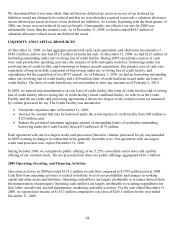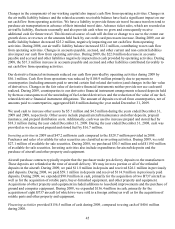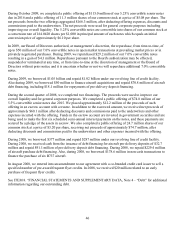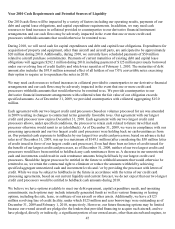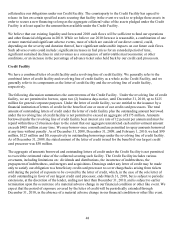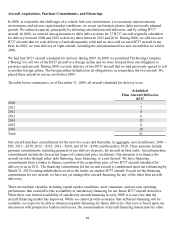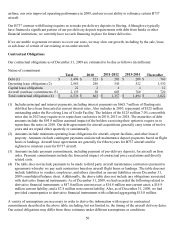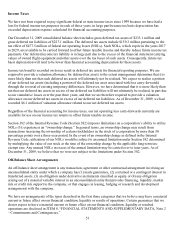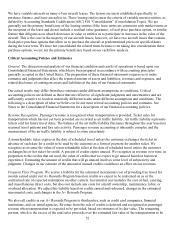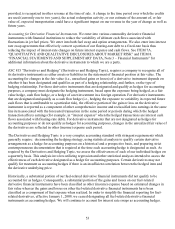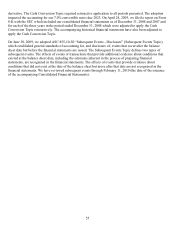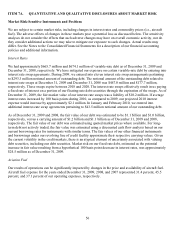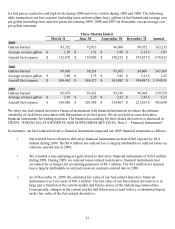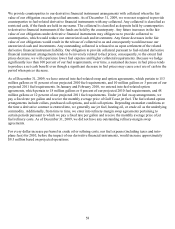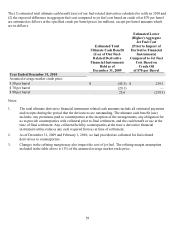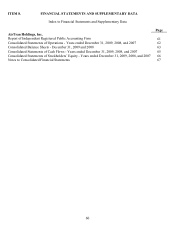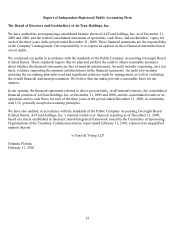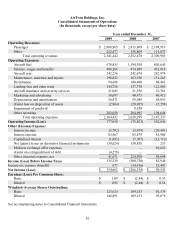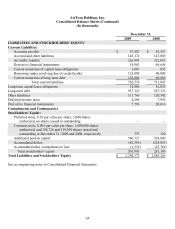Airtran 2009 Annual Report Download - page 63
Download and view the complete annual report
Please find page 63 of the 2009 Airtran annual report below. You can navigate through the pages in the report by either clicking on the pages listed below, or by using the keyword search tool below to find specific information within the annual report.54
We enter into commodity-related derivative instruments with third party institutions in “over-the-counter”
markets. As the majority of our commodity-related derivative instruments are not traded on a market exchange,
we estimate their fair values. Depending on the type of instrument, the values are determined by the use of
present value methods or mathematical option value models with assumptions about commodity prices based on
those observed in the respective markets. Forward jet fuel prices are estimated using other energy commodity
futures prices (such as heating oil) and adjusted based on historical variations to those similar energy
commodities.
In summary, the Derivatives and Hedging Topic requires that changes in fair value (i.e., unrealized gains and
losses) on some derivative financial instruments be recognized in earnings in advance of realization. The
accounting for derivative financial instruments may result in increased and unanticipated earnings volatility.
Accounting for Long-Lived Assets. When appropriate, we evaluate our long-lived assets in accordance with
ASC 350 “Intangibles - Goodwill and Other” (Intangibles - Goodwill and Other Topic), and ASC 360
“Property, Plant and Equipment” (Property, Plant and Equipment Topic). We review goodwill and indefinite-
lived assets for impairment annually and whenever events or changes in circumstances indicate the carrying
value of an asset may not be recoverable. The Intangibles - Goodwill and Other Topic also requires that the fair
value of the intangible assets with indefinite lives be estimated and compared to the carrying value. We
recognize an impairment loss when the estimated fair value of the intangible asset is less than the carrying
value.
We operate an integrated network, and accordingly, cash flows for most of our assets are assessed at a fleet
level, not an individual asset level, for our analysis of impairment. We record impairment losses on depreciating
and amortizing long-lived assets used in operations when events or circumstances indicate that the assets may
be impaired and the undiscounted cash flows estimated to be generated by those assets are less than the net
book value of those assets. In making these determinations, we utilize certain assumptions, including, but not
limited to: (1) estimated fair market value of the assets; and (2) estimated future cash flows expected to be
generated by such assets, which are based on additional assumptions such as asset utilization, length of time the
asset will be used in our operations, and estimated salvage values.
In accounting for long-lived assets, we must estimate the useful lives and salvage values of the assets. The
actual useful lives and salvage values could be different from the estimates. Generally, changes in estimated
lives and salvage values are accounted for by adjusting depreciation and amortization expense prospectively.
New Accounting Pronouncements
In June 2009, the FASB issued Accounting Standards Codification (ASC, or the Codification) as the source of
authoritative generally accepted accounting principles (GAAP) recognized by the FASB for non-governmental
entities. The Codification is effective for financial statements issued for reporting periods that end after
September 15, 2009. The Codification superseded all then-existing non-SEC accounting and reporting
standards. The Codification did not change rules and interpretations of the SEC which are also sources of
authoritative GAAP for SEC registrants. Because the Codification did not change GAAP, the Codification had
no impact on our consolidated financial statements or footnotes.
On January 1, 2009, we adopted ASC 470-20, “Debt with Conversion and Other Options – Cash Conversion”
(Cash Conversion Topic), regarding the accounting for convertible debt instruments that may be settled in cash
upon conversion. The Cash Conversion Topic requires the issuer of certain convertible debt instruments that
may be settled in cash (or other assets) upon conversion to separately account for the liability (debt) and equity
(conversion option) components of the instrument in a manner that reflects the issuer’s non-convertible debt
borrowing rate, unless the embedded conversion option is required to be separately accounted for as a


